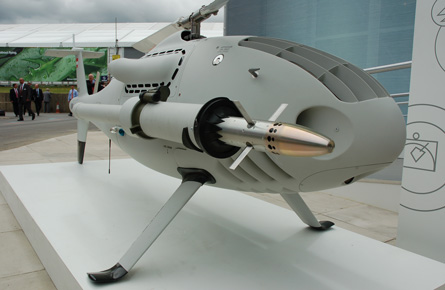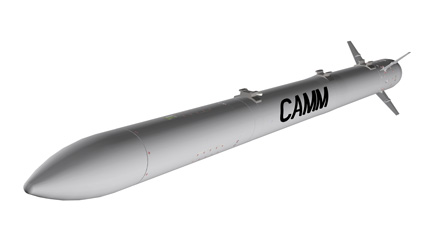The UK Ministry of Defence has made the first significant advance in its Team Complex Weapons initiative, approving a £74 million ($147 million), one-year budget to launch six risk-reduction projects.
Announced on 15 July, the move comes two years after then-Minister for Defence Procurement Lord Drayson launched the Team CW scheme at the last Farnborough air show, establishing a six-month goal to finalise a partnering agreement with industry.
After encountering a complicated period of negotiations, the initiative finally received initial gate approval in early June.
Including MBDA, Qinetiq, Roxel, Thales Missile Electronics, Thales UK and the MoD, the partnership was formally launched with a signing ceremony at the Farnborough air show involving Minister for Defence Equipment and Support Baroness Taylor. “Team CW will help to maintain the UK's key skills and technologies in missile development and protect our operational sovereignty in this sector for the future," she says.
“This is a real landmark,” says Team CW industrial chairman and MBDA UK managing director Steve Wadey. “It has taken radical change in industry and the MoD to reach this point.”
The new framework seeks to remove duplication, simplify platform integration, encourage modularity and provide planning stability to the UK’s guided weapons sector. This has suffered a 25% decline in its business over the last few years, but is expected to value a potential £6 billion over the next decade, says Wadey.
 |
|---|
© Craig Hoyle/Flight International |
Covering so-called ‘weapons of broad utility’, the projects include the light and heavy elements of the Royal Navy’s future air-to-surface guided weapon requirement, respectively based on the Thales-developed lightweight multirole missile (pictured above with Scheibel Camcopter unmanned air vehicle) and an enhancement of MBDA’s Sea Skua airframe.
 |
|---|
© Team Complex Weapons |
A development of the latter design will also provide the basis for the 100kg (220lb) requirement in the MoD’s selected precision effects at range air-launched weapon programme (artist's impression, above). A related weapon in the 50kg class is likely to be a development of MBDA’s Brimstone air-to-surface missile, and will be used by manned fighter aircraft and attack helicopters.
Enhancements to MBDA’s Storm Shadow cruise missile will also be made, with a mid-life upgrade to focus on enhanced operational flexibility and increased lethality.
 |
|---|
© Team Loitering Munitions |
The Fireshadow ground-launched loitering munition, developed within a 15-month period and fired for the first time during April (above) under a £10 million investment by UK industry, is meanwhile expected to enter British Army service before 2012. “That was a huge example of the commitment from industry, and of being able to do rapid development,” says Wadey.
A next-generation common anti-air modular missile family will also be developed to replace the MBDA Rapier and Seawolf systems and enhance the capabilities of the company’s Asraam air-to-air missile (below).
 |
|---|
© Team Complex Weapons |
“We understand that we have a fixed budget to work with,” says Wadey. “We can’t keep growing costs or delaying programmes; we need to understand the real MoD priorities and drivers. This is about delivering World-class military capability, and getting the best technology to the frontline.”
The initial contracts form part of an assessment phase to last up to three years, says Alan Nicholl, director programmes for the UK Defence Equipment and Support organisation’s weapons cluster. Raytheon Systems of the UK has also formally applied to join the Team CW organisation, he confirms.
Source: Flight International























